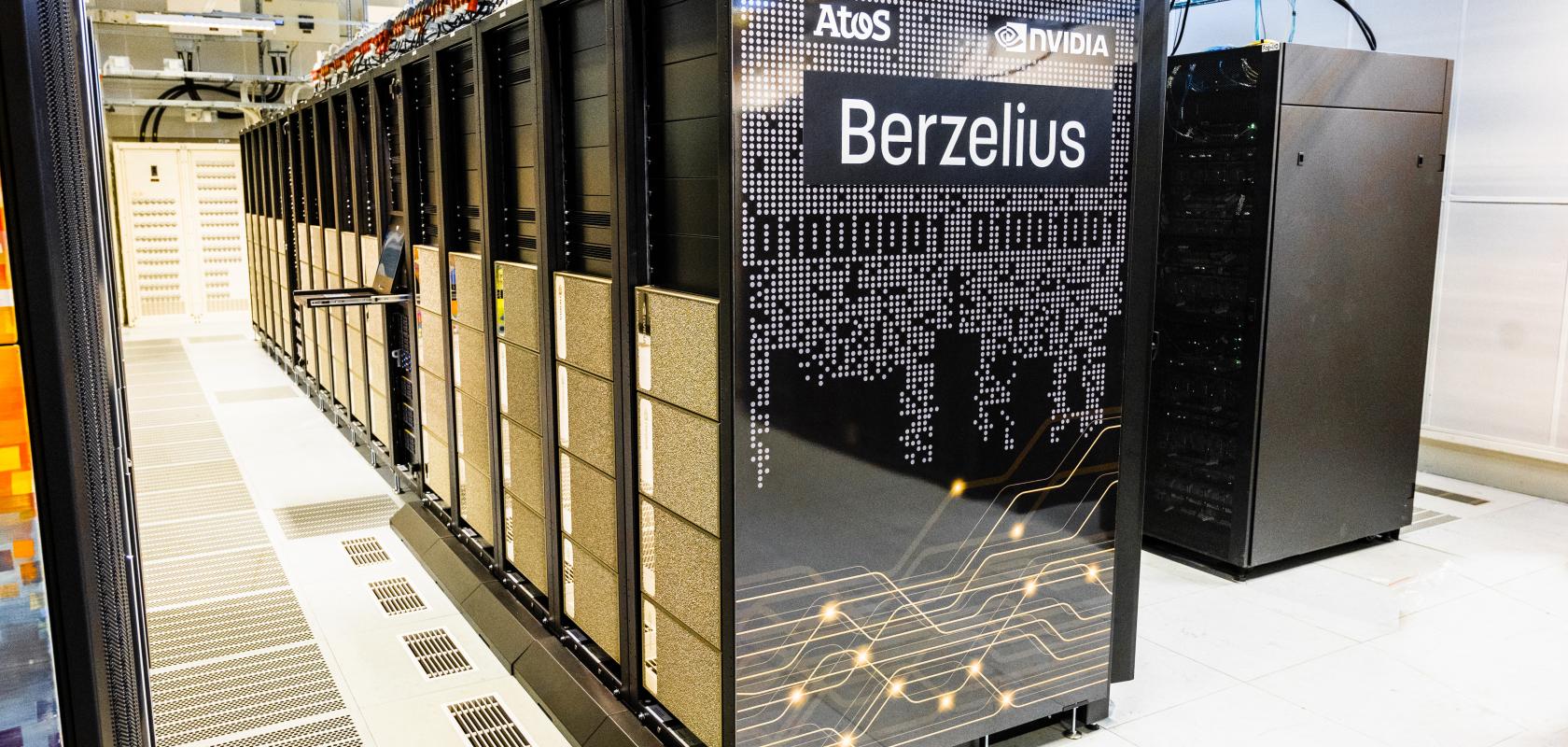Cancer diagnosis, computer vision and materials development are just a few research challenges that AI can help solve. The supercomputer Berzelius was inaugurated in the spring of 2021, and was then Sweden's fastest supercomputer for AI. Yet, more power is needed to meet the needs of Swedish AI research.
Anders Ynnerman, Professor at Linköping University and Programme Director for Wallenberg AI, Autonomous Systems and Software Program, WASP comments: “Development has been rapid and today Swedish AI research is at the international forefront. Much of this is due to major research initiatives like WASP.”
Another prerequisite for world-leading research in artificial intelligence is access to large-scale computing power. The National Supercomputer Centre at Linköping University is home to one of Europe’s fastest supercomputers for AI – Berzelius.
The supercomputer was ready in the spring of 2021, with a processing capacity of 300 petaflops for AI, which meant that Berzelius was Sweden's fastest supercomputer in that field.
The computing power of Berzelius comes from 60 interconnected AI supercomputing systems where each consists of 8 graphics processing units (GPU) designed and produced by Nvidia and supplied by the French company Atos.Berzelius at the National Supercomputer Centre.
But AI research is constantly developing, and now, two years after its inauguration, Berzelius is being equipped with 34 additional AI systems from Nvidia. So, in total, Berzelius can pride itself on having 94 AI systems, which together consist of 752 GPUs.
With more interconnected systems, which also have higher clock rates, the new computing power equates to as much as 470 petaflops for AI calculations. However, comparing traditional supercomputers with supercomputers designed for AI is not straightforward, so the international competitiveness of Berzelius remains to be seen. But one thing is certain – Swedish AI research is getting more muscle.
"What Berzelius is very good at is having many GPUs work at the same time on the same problem. This requires extremely fast networks inside the computer, and Berzelius has these," added Ynnerman.
Berzelius is a national resource available to researchers from all over Sweden. Some of the projects that the computer has worked on so far relate to computer vision, cancer treatment and the development of new materials. Michael Felsbergs is one of Sweden's foremost AI researchers.
The large computing power is essential for handling huge amounts of data and finding connections using deep neural networks.
Michael Felsberg is a professor at the Computer Vision Division at Linköping University. He is one of Sweden's foremost AI researchers and has worked on machine learning for computer vision for more than 20 years. Computer vision involves computers being able to perceive the world as humans do and, in some cases, better.
“I’ve been asking for large-scale GPU resources long before Berzelius came. Our research was severely limited because we were unable to run the experiments we needed. It could be said that Berzelius is our electron microscope – some experiments cannot be carried out without it,” says Michael Felsberg.
The networks trained for computer vision require huge amounts of training data – tens of millions of images and 3D data sets – to work. And having parallel processes running simultaneously across multiple GPUs, as Berzelius can do, has led to what many call a revolution in computing vision.
AI initiatives
Berzelius has been built with the help of a donation of SEK 300 million from the Knut and Alice Wallenberg Foundation, which is also responsible for the record donation for WASP, Sweden's largest ever research initiative.
WASP is a project for basic research, education and recruitment in artificial intelligence, autonomous systems and software development located at several Swedish universities, where the University of Linköping is the host university.
"All research needs funding for doctoral students. Thanks to WASP, we have had more thesis defences and the number of scientific citations has increased significantly," says Michael Felsberg.
Today, many automatic systems are changing into autonomous systems using artificial intelligence, which is known as the fourth industrial revolution. The new technology is an important part of meeting the major challenges facing society.


